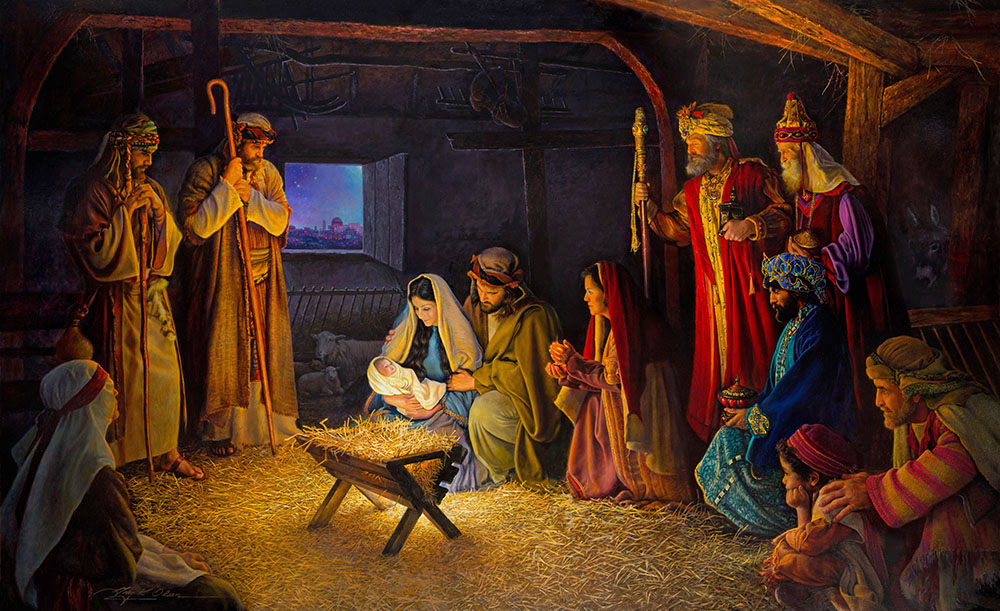
If you’re offering a collection of painted or carved outdoor nativity figures every year and at Christmas, you’re part of the tradition of hundreds of years.
If you’re showing a piece of carving or a display of plaster (or creche) this holiday season, you’re parting with a precious tradition of Christmas that dates through the ages. Find out the history behind Nativity creches.
Tradition
Legend has it that Saint Francis of Assisi founded his first creche at the time that the nativity scene was a live show that featured an ox, a manger, and a donkey, all in the context of a Christmas Eve Mass he planned when he visited the town of Assisi near the mountains of Grecia.
St. Bonaventure wrote of the night’s events in his book of St. Francis, “A certain valiant and veracious soldier, Master John of Grecio, who, for the love of Christ, had left the warfare of this world, and become a dear friend of this holy man, affirmed that he beheld an Infant marvelously beautiful, sleeping in the manger, Whom the blessed Father Francis embraced with both his arms as if he would awake Him from sleep. “
Nativity at Christmas
The first time a Nativity scene was made and adopted, the custom was adopted and spread. In the course of about a century, almost every church across Italy such as, for example, was part of the custom. As time passed the statues of animals and live people were used which ultimately led to the Nativity displays in homes that are a regular feature in Christmas celebrations to this day.
Creches may not be historically accurate as they depict both shepherds and they portray the Magi as they appeared in the scene immediately after Christ had been born. But it is true that they are based on the Gospel of Matthew mentions that the Magi joined the star that was pointed towards Jesus’s house for at most a year following the birth. However, the believers get their inspiration from popular characters from the Christmas story. They are all in one location.
There are numerous researchers which believe the oldest creche in Italy is composed of marble statues that were kept in Rome’s Basilica di Santa Maria Maggiore and are believed to be the work of the artist Arnolfo of Cambio The statues are believed to be having been created at various times starting in 1284 and closing in 1289.
A French area in Provence is well-known as a region where craftsmen create saints (little saints) miniature clay figures, which are made by hand. Like other regions, nativity-themed home scenes are very well-liked in this part of France However, they were typically intricate and constructed from costly materials, making them far too expensive for the average family. During the French Revolution, they were almost entirely outlawed.
In 1797, Jean-Louis Lagnel began to create figurines of the Nativity made of clay, making them available to everyone. Later, in the 20th century, Therese Neveu introduced the tradition of firing clay figures to strengthen them, leading to the Santons which we see today. The Musee du Santon et des Traditions de Provence is home to one of the biggest assortments of Santons. This is also where you can observe the world’s largest creche, according to the Guinness Book of World Records with 39 Santons to be exact.
Tomas Kryza
The Guinness Book of World Records refers to the creche invented in 1838 by Tomas Kryza (1838-1918) as the most extensive of its kind. The stocking weaver of Jindrichuv Hradec which is now the Czech Republic, Kryza spent 60 years creating the extravagant display, which features 1389 characters that include human beings and animals. Kryza started by creating the Nativity scene. In the years that followed he added more creches and is now part of the collection in the Jindrichuv Hradec that also includes other Biblical themes as also scenes from everyday life during the 18th century.

